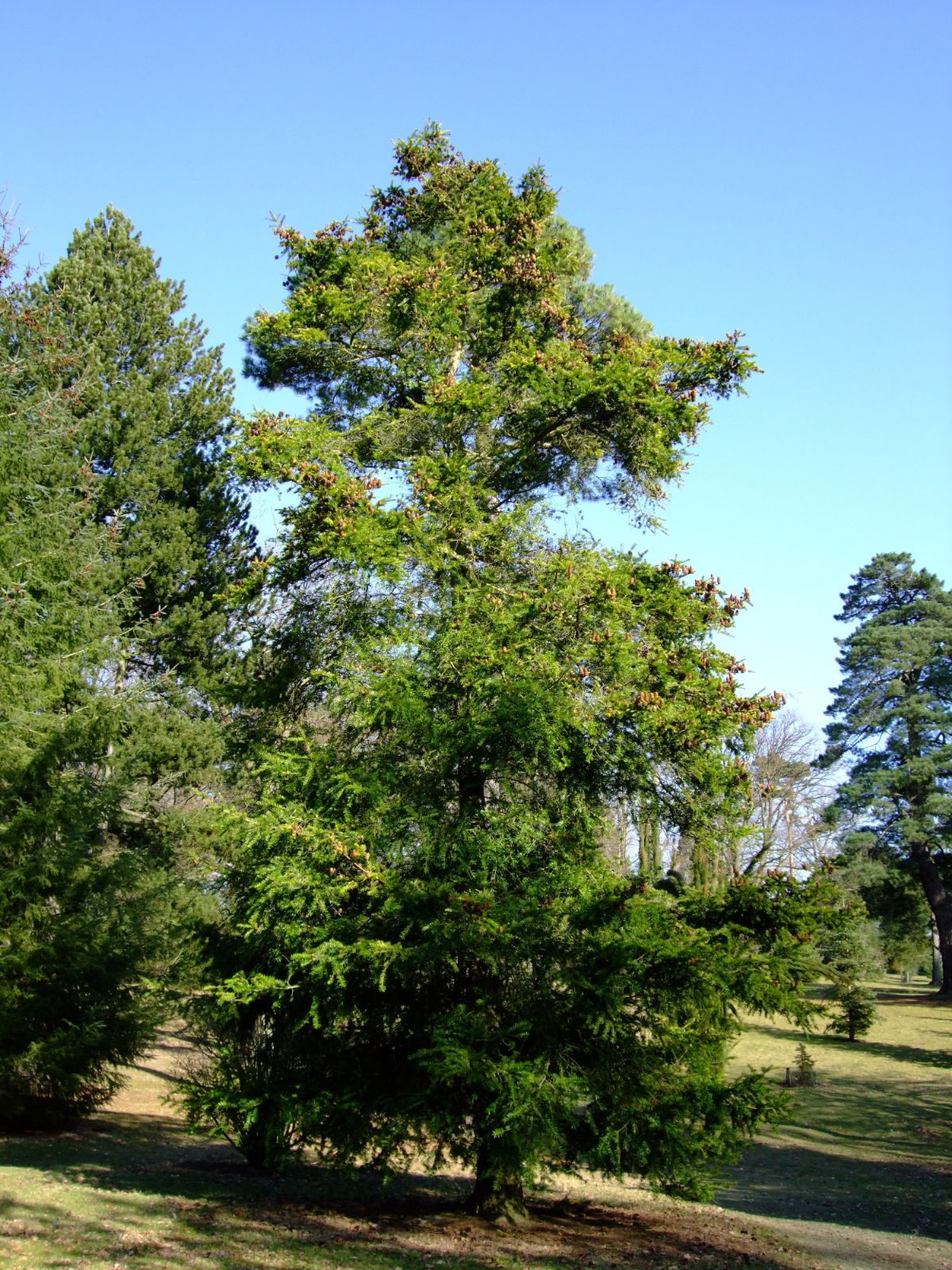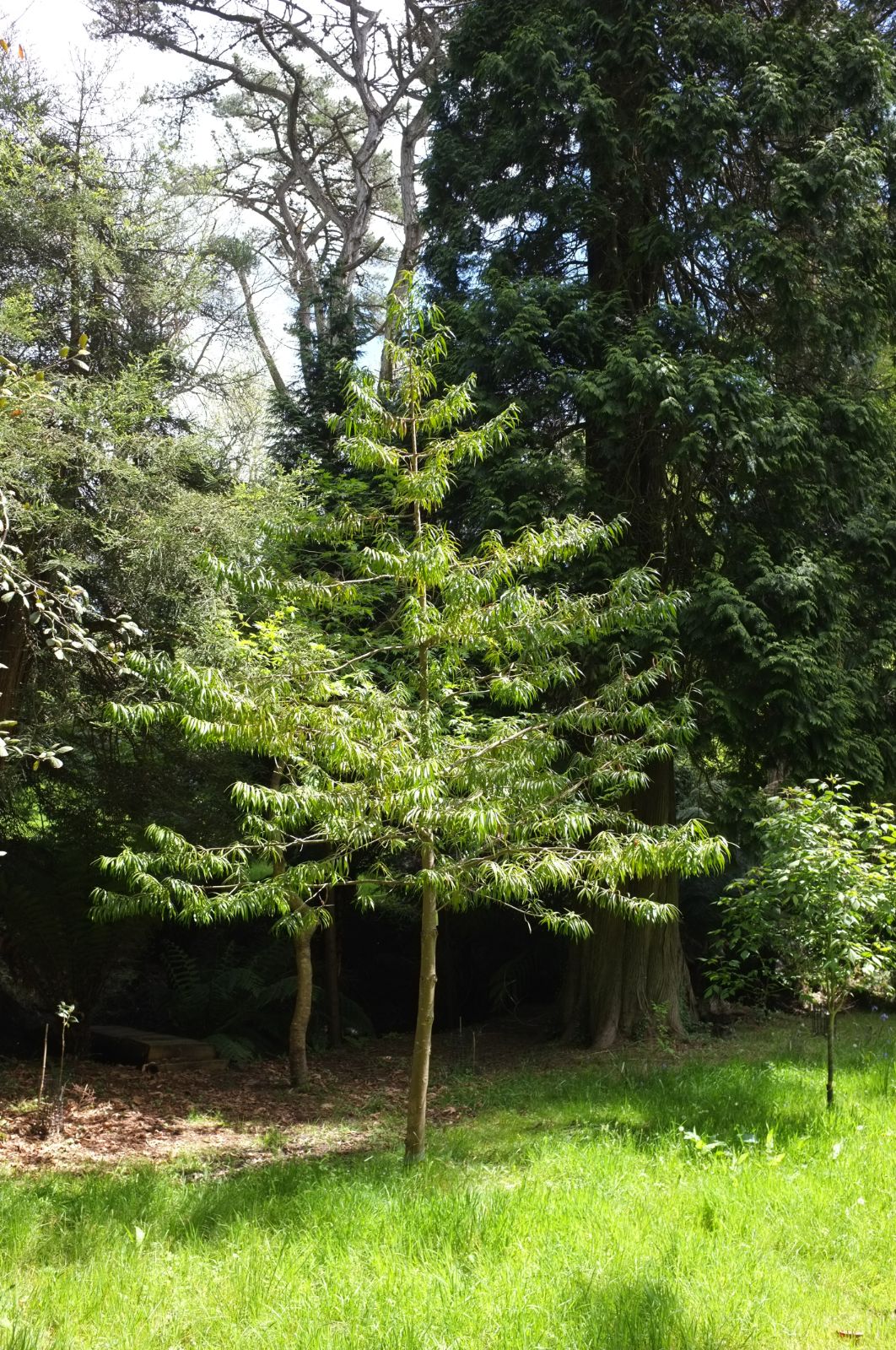Keteleeria
Credits
Article from Bean's Trees and Shrubs Hardy in the British Isles
Article from New Trees by John Grimshaw & Ross Bayton
Recommended citation
'Keteleeria' from the website Trees and Shrubs Online (treesandshrubsonline.
Family
- Pinaceae
Keteleeria was revised by Farjon (1989), and in the process the number of species was reduced drastically, from fourteen to three. The genus occurs primarily in China and Taiwan, though there are outlying populations in northern Laos and southern Vietnam. Keteleeria species are medium-sized, evergreen trees with straight trunks. The bark is rather thin, though in older trees it thickens and can develop scales and longitudinal fissures. Branching is irregular, and the primary branches are rigid and spreading. Forms with pendulous branches are known, though these may be a result of coppicing. Immature branchlets may be pubescent or glabrous, and are yellowish to reddish brown. The buds are covered in persistent, non-resinous, triangular bud scales. The needle-like leaves exhibit a weak dimorphism, whereby the juvenile leaves are broad, lanceolate and thin, while mature leaves are narrow, linear and thick. Juvenile leaves are found on young plants and on secondary branches of more mature plants; juvenile characters may also occur in coppiced specimens. This variation in leaf morphology within species may partly account for previously inflated numbers of species. The leaves are spirally arranged and resemble those of Abies: the leaf bases are twisted, the leaves are arranged roughly in two ranks and the stomata are arranged in two rows separated by the midrib. Male strobili are not pendulous, and form umbellate clusters at terminal or lateral buds. There are between five and ten strobili in each cluster. The cones are erect and restricted to the upper part of the crown. They have a long, leafy peduncle, and mature in one year. The cone scales are spirally arranged around a central rachis, and remain attached to the rachis at maturity. However, after a few years, the cone rachis breaks up and scales and rachis are shed from the tree; the seeds are not released until the cone breaks up, except during windy weather. The bract scales are half the length of the cone scales, and may be included or partially exserted. There are two seeds on each scale, and these are partially enclosed in a membranous cup, which extends to form a persistent wing. The seeds are rather large. When identifying Keteleeria species, the shape of the cone scales is particularly important (Farjon 1989, 1990).
Keteleeria has never been a very satisfactory genus in maritime Europe, apparently requiring hot summers and an absence of late spring frosts to do well: Mediterranean Europe, Texas, California and Australia seem to offer the best climates for the genus. Trees should be planted in well-drained to dry sites. In the United Kingdom only K. davidiana has formed a respectable tree, and then only in a limited number of gardens. The current champion, at Wakehurst Place, was planted in 1918 but is only 11 m tall (Johnson 2003). The first species to be introduced – K. fortunei, from eastern China – is particularly unsatisfactory and is now extremely rare in cultivation. New introductions from different provenances should perhaps be sought.
Bean’s Trees and Shrubs
Keteleeria
A genus of a few species in China, named in honour of J.-B. Keteleer, a French nurseryman of Belgian birth, partner in the firm of Thibaud and Keteleer. It is allied to Abies, differing from it most markedly in the cones, which fall in one piece, whereas in Abies they break up on the tree. The male catkins are borne in umbels. The leaves on young plants are unlike those of any species of Abies, being tapered into a sharp point. The buds consist of numerous scales, which persist at the base of the shoot.


